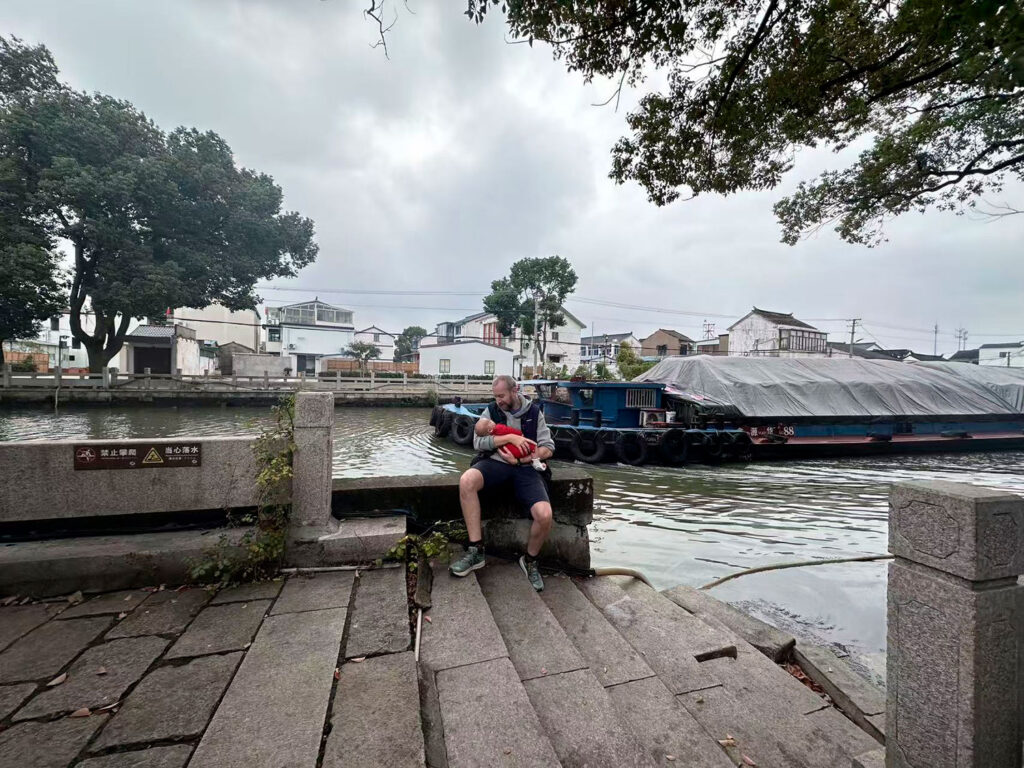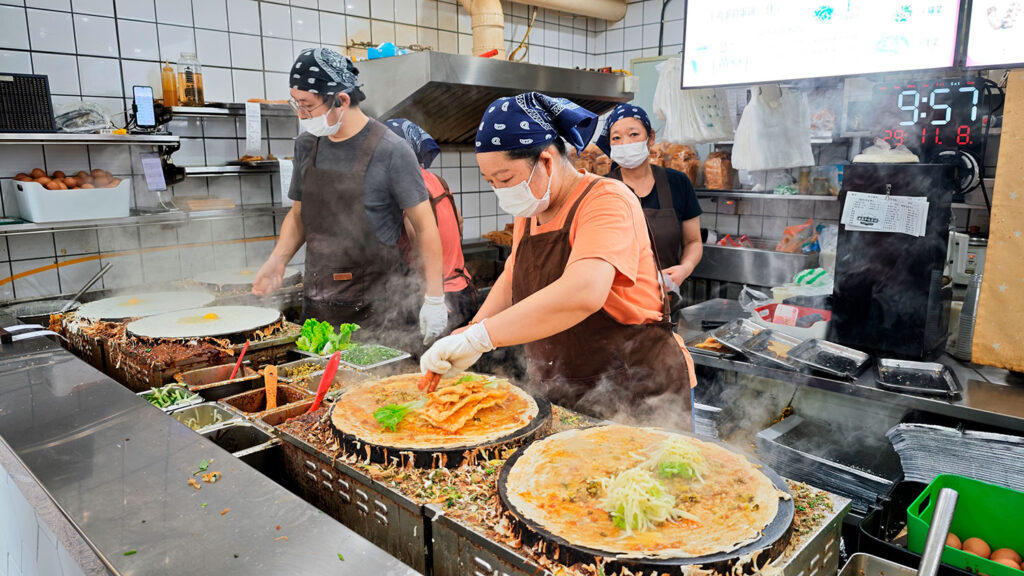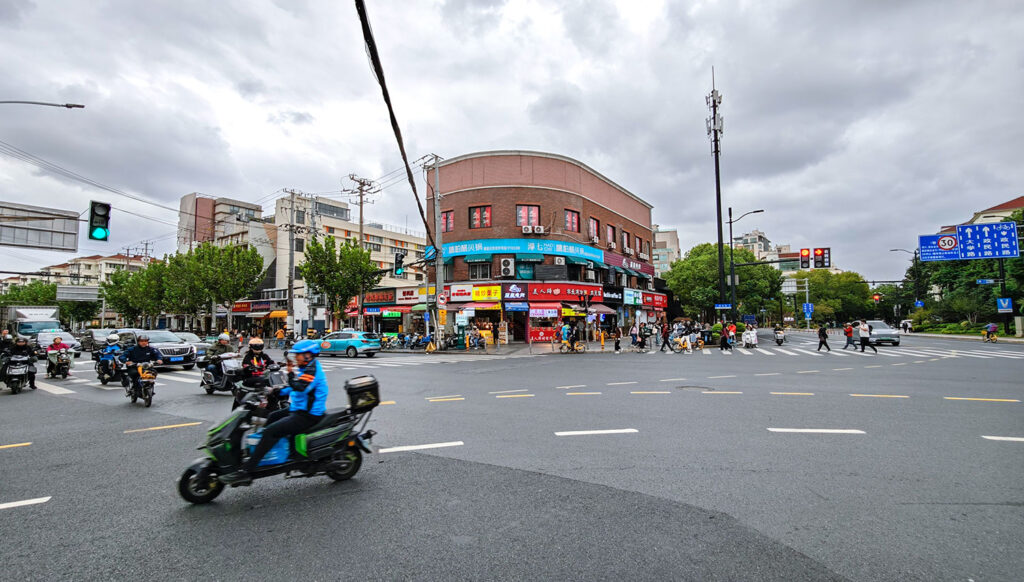I picked a random city on the map and bought high-speed train tickets. The whole country is off during the Middle-Autumn Festival (中秋节) and the last thing I wanted was crowds. Plus, China’s high-speed trains are really fast, its rails span far & wide —so all I wanted was a city with a station connected to Shanghai.
Jiangshan (江山) in the Zhejiang province (浙江) fitted that requirement. From Shanghai, we covered almost five hundred kilometers in two-and-a-half hours. I thought it would be a tiny city, because on Baidu and Google I could only find few images of it. And everyone I told about my travel plans had never heard about this place. It lacks the fame of Huangshan (黄山), but so too it lacks Huangshan’s crowds who flock the mountain. Like Danyang (丹阳) in the Jiangsu province (江苏) which I visited last year, cities like Jiangshan are shrouded in anonymity — and yet also here, each day life is lived; photographs are taken, dinners are eaten, and children are born.
In China, Jiangshan is only a tiny city, yet it is big by Western standards. Its population of 613,000 people falls under the jurisdiction of Quzhou (衢州), which lies forty kilometers east. Mainland China has 388 county-level cities like Jiangshan, and 293 prefectural-level cities such as Quzhou. So how do you describe this feeling when you realize how big the universe is? Like, how your head wants to explode because the numbers don’t make sense. I get a similar feeling when I realize how big China is, especially walking on the streets here and seeing people live.


We board a taxi to the city’s name-giver, thirty kilometers away from the city center: a mountain called Jianglang (江郎山), or in English: River Mountain. Our driver Hubao (忽宝) explains why: “Well, there’s a river here, and a mountain…” We do learn more insightful things from Hubao though. Just like how the city Wenzhou (温州) is famous for its factories making cigarette lighters, and how Danyang is famous for its spectacles — Jiangshan mostly has factories that make either fire extinguishers or doors — and the product in-between: fire-resistant doors. The wood that is used to make the doors does not come from these woods, Hubao adds.
We drive through the rural parts where everything is so incredibly green. There are fields or forests, and sometimes a cluster of houses. “Look at these houses, some four floors high. But nobody lives on those high floors, nobody needs such a big house.”, Hubao says. He is born in the 1970s, and says the roads we drive on didn’t exist back then. “How did you go to places then?”, we ask: “Well, we just didn’t, we just stayed at home all day.” He continues: “Everything is so developed now, what’s next? Space? When I was young, I had a bicycle, a Phoenix (凤凰), a black one! And I was so happy with it. We didn’t have a fridge and we bought food and clothes with coupons. If people could just eat and send their children to school, they were happy. Now everybody at least needs to have a car.” Only twice he has been to Shanghai. “What hobbies do you have?”, I ask. Hubao says none: “I just drive all day. Really.” He looks around and says: “I don’t gamble. I think that’s is good.”
The mountain has three peaks, named Ling Feng (灵峰), Ya Feng (亚峰), and Lang Feng (朗峰). The middle one, Ya Feng, looks eerily fragile as if it’s about to fall over, while Ling Feng’s cliff is almost straight vertical and rounded, like a rock in the water. This type of red rock with steep cliffs is called Danxia landform (丹霞地貌). We climbed the tallest one, Lang Feng, which is 819.1 meters tall (whoever made the sign on the summit was surprisingly specific, they added the decimal). It took us a good two hours — and there were almost no people, despite this being a public holiday. The people we did meet on the way and on the top were from the area itself. Each time, “Where are you from?” was answered with “Ah!? From here!”, although ‘here’ meant Quzhou county, not per se Jiangshan city.



Back in downtown Jiangshan, we stroll alongside the river. The Jiangshan Gang (江山港) doesn’t really cross the city — it rather lays against its side, like the city trapped between the mountains, and it draws people out in the evening. Fishermen fish, and aunties dance. Several groups have carried karaoke equipment and lights, and perform for a crowd who either hold a smartphone or a cigarette, not often both. The sight of a foreigner isn’t too familiar here, but most people are friendly and curious — although at times I do see the momentary panic in someone’s eyes and them swiftly putting on a facemask; scared that I was perhaps in Europe just a few days ago, something not just untrue, but also impossible due to China’s strict quarantine policy. Some elders who know a few words of English want to make small talk with me, while mothers push their kids to use English with me: “Happy Mid-Autumn Festival”, a girl tells me after her mom translated ‘中秋节快乐’ on her phone. Her mom records it and shares it on her WeChat moment.



I like the whole vibe. In Jiangshan, almost nothing towers above five floors. There’s exactly one KFC, one Starbucks, and one Pizzahut. It’s a welcome break from Shanghai and other big cities I’ve been too: Beijing, Hangzhou, Wuhan, Nanjing, or even Nantong. They are all modernized into similarity, and all feel the same. Glass and steel replaced local architecture, even if the latter was never designed to be beautiful — and shopping malls replaced whole city blocks with their variety of purposes: housing, community, and family run shops. There’s more space between the buildings than in Shanghai, which brings the people closer to each other. This is what Jiangshan offers and what a foreigner yearns for, even if Hubao thinks it has already developed so much.







